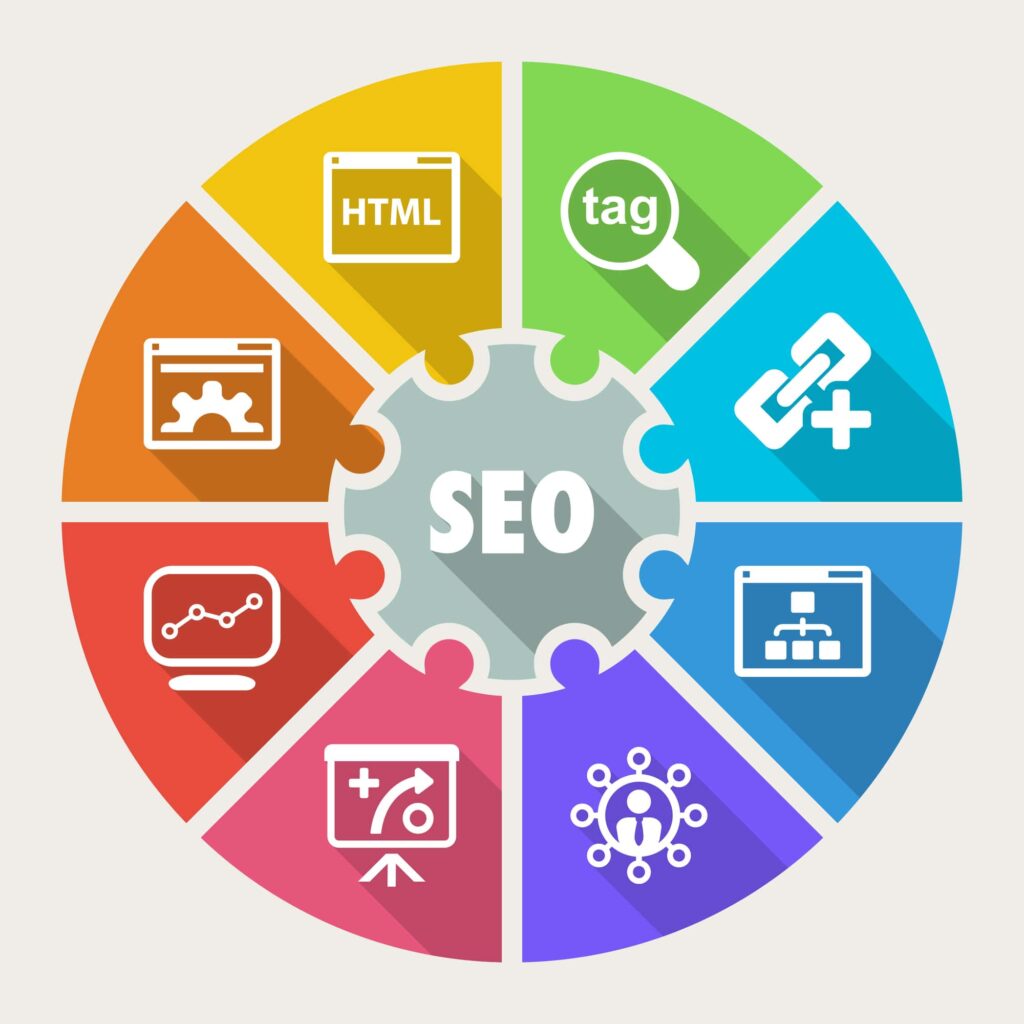Essential On-Page Optimization Techniques to Boost Your SEO

Search engines like Google decide which websites show up first based on many factors. One of the most important of these factors is called on-page optimization. This means making sure that everything on your website—from the titles to the images—helps search engines understand your content and rank it higher in search results. If you want more people to find your website, it’s critical to know how to optimize each part of your site. So here are our top on-page optimization techniques to help boost the SEO of your website.
Title Tags
The title tag is one of the most visible parts of your web page when someone finds it through a search engine. It’s what people see as the clickable headline on the search results page. To make your website stand out, your title tag should clearly tell what the page is about. It’s also a good idea to use keywords that match what people are searching for.
However, be careful not to make the title too long or too complicated. Ideally, keep it under 60 characters, and make sure it’s easy to read.
Meta Descriptions
A meta description is the short summary that appears under the title tag on search results pages. Even though meta descriptions don’t directly impact where your page ranks, they do influence whether or not someone clicks on your link.
A well-written meta description can attract visitors by explaining what they’ll find on your page. Aim for around 150 characters and include a clear benefit or reason to visit your site. It’s important to give people a reason to click your link instead of one of the many others listed (otherwise known as a Call to Action).
Header Tags
Headers are the titles and subheadings within your page content. They help organize your page and make it easier for visitors to read. More importantly, they also help search engines understand the structure of your content.
Your main title should use a “H1” tag, and subheadings should use “H2” or “H3” tags. This not only helps break up the text for readers but also signals to search engines which sections of your page are most important. Think of it as a roadmap that both users and search engines follow to navigate your content.
URL Structure
The URL is the address of your web page, and it should be as simple and clear as possible. When creating URLs, use words that describe the content of the page. Avoid long, confusing strings of numbers or random characters.
A good URL is short, descriptive, and includes relevant words. For example, a URL like “www.example.com/seo-tips” is much clearer than “www.example.com/page?id=12345.” Clear URLs help search engines and visitors understand what to expect when they visit the page.
Keyword Placement
Using the right words in the right places is key to improving your website’s visibility. Keywords are the words or phrases people type into search engines when they’re looking for information.
However, it’s not enough to simply throw a bunch of keywords into your content. You need to place them strategically. Good places to include keywords are in the title, in the first paragraph, and in headers throughout the page.
Avoid overusing keywords, as this can make your content sound awkward and can even hurt your rankings. Focus on making your writing flow naturally while including relevant keywords.
Internal Linking
Internal links are links from one page of your website to another page on the same site. These links help guide visitors through your site and encourage them to explore more of your content. For example, if you write a blog post about SEO tips, you could link to a related post about content marketing.
Internal linking is important because it keeps people on your site longer and helps search engines find and index all of your content. Be sure to link to relevant content that adds value to your visitors, and don’t overdo it with too many links on a single page.
Image Optimization
Images make your website more engaging, but they can also slow it down if they’re not optimized correctly. To make sure images don’t hurt your page’s performance, you should compress them so they load faster.
In addition, use descriptive file names and add “alt text” to each image. Alt text is a short description that tells search engines what the image is about, which can help improve your SEO. Alt text is also important for making your site accessible to visitors who use screen readers.
Mobile-Friendliness
More people browse the web on their phones than ever before, so it’s essential that your website works well on mobile devices. A mobile-friendly website automatically adjusts to fit the screen size of the device it’s being viewed on, whether it’s a phone, tablet, or computer.
Google now ranks websites based on how well they perform on mobile, so if your site isn’t mobile-friendly, it could hurt your rankings. To improve your site’s mobile performance, make sure your text is easy to read, your images load quickly, and all of your buttons and links are easy to tap.
Page Speed
How fast your website loads has a big impact on both user experience and search rankings. Visitors don’t like waiting for slow pages to load, and neither do search engines.
There are several ways to improve page speed, such as compressing images, minimizing the amount of code on your page, and using browser caching. Browser caching stores parts of your website so they load faster the next time someone visits. If your page loads quickly, visitors are more likely to stay, and search engines will be more likely to rank you higher.
Content Quality
At the end of the day, high-quality content is what will keep people coming back to your site. Search engines have gotten better at understanding the value of your content, so simply adding keywords isn’t enough anymore.
Your content should be informative, well-researched, and engaging. It should answer the questions your visitors are asking and solve the problems they’re facing. When visitors spend more time on your page because they find the content helpful, search engines take notice and may rank your page higher.
High-quality content is also more likely to get shared, which can bring even more traffic to your site.
Improve Your Website’s Search Engine Ranking Positions with Proven Strategies from the SEO Experts at Pink Dog Digital
Worried about whether your business website is on the right track with its SEO? Pink Dog Digital has your back! We help our clients hold valuable SERPs at the top of search engine queries with our proven optimization strategies.
Our team will leverage our knowledge of great SEO to help you optimize your content, identify new opportunities, and stay ahead of Google’s constant updates. At Pink Dog Digital, we thrive on helping small businesses achieve their SEO goals and grow their digital footprint.
For more information, call us at 410-696-3305, email us at pinkdogdigital@gmail.com, or contact us through our website.

